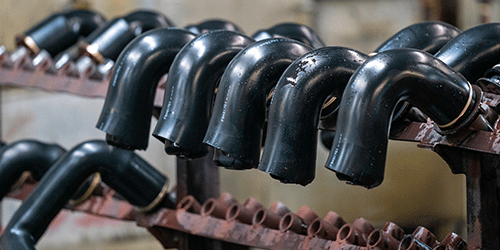A wide variety of material types is necessary to build a home or a commercial building. Even when the exterior leads an observer to believe that the building is composed of metal, wood, and brick, there are many other types of materials working hard to keep the structure standing and working as it should—including rubber.
Rubber is essential in construction for it’s elongation properties, which can be as much as 1000% of the original size. Due to this incredible stretching capability, if a body is subject to a load below the limit of elasticity, the strain will be proportional to the load (according to Hooke’s law of elasticity). This applies to rubber under tension and pressure and means that rubber does not have a constant modulus of elasticity in extension or compression.
Soft rubber is about 100,000 times more pliable than steel, with a modulus of elasticity in compress for rubber within the normal hardness range of 30 – 80°IRH is between 2 and 12MPz, while steel is 210,000.
Rubber’s buffering capacity also makes it a valuable material in the construction industry, particularly for machines mounted on springs. When a rubber spring is subjected to pressure, the direct energy loss is between 6 and 30%, depending on the hardness of the rubber. This is sufficient for the rubber springs to be used as vibration dampers in many cases.
Rubber is also a great insulator against sound and therefore very useful for cushioning structure-borne noise generated at base plates and floors.
Rubber is entirely resistant to humid air and commonly occurring acids. The highest temperature to which natural rubber can be continually exposed is about 167°F/75°C. Rubber becomes rigid in very low temperatures of -40°F/-40°C, and at even lower temperatures the material becomes very hard, brittle and inelastic.
You can contact us anytime to request a quote for your manufacturing project. We’ll get back to you within 48 hours.
